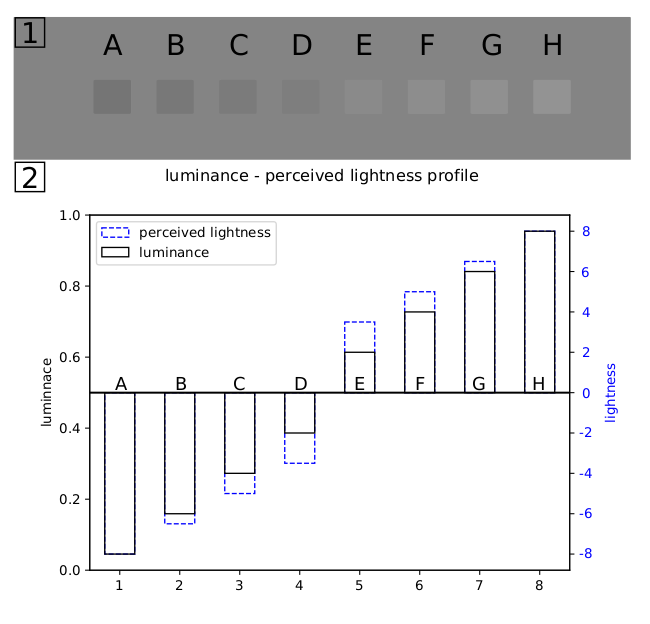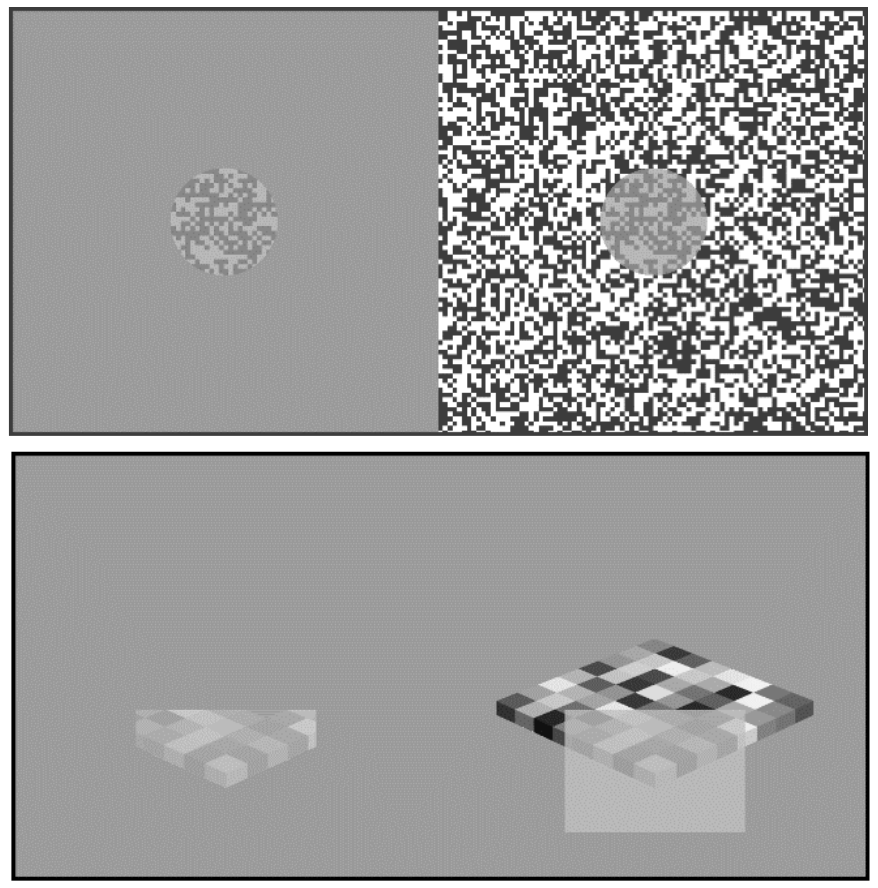Complete Theses
Carolin Brunn - The Crispening Effect: An Artifact of a Method or a Feature of the Visual System (2020)
Notwithstanding decades of research, many perceptual processes involved in humans’ visual perception are yet to be fully understood. Understanding the perception of surface reflectance, also called lightness perception, is fundamental for this research. Of particular interest are visual phenomena in which perceived lightness cannot be predicted from the physical luminance signal. As such, the Crispening Effect (CE) describes a phenomenon in which the perceived lightness of an object is influenced by its surroundings. The difference of two samples is enhanced when the samples’ luminance approaches the background luminance. Until now, CE has mostly been studied with matching methods using adjustment tasks. One weakness of adjustment tasks is that they only reflect but do not recover an observer’s perceptual scales, which describe the relationship between luminance and perceived lightness. This thesis therefore investigates whether CE might simply be an artifact that results from the methodological weaknesses of adjustment tasks, or whether CE is an actual feature of visual processing. For this, I reanalyze perceptual scales obtained by Aguilar and Maertens (2020) with two statistical scaling methods, Maximum Likelihood Difference Scaling (MLDS) and Maximum Likelihood Conjoint Measurement (MLCM). Both methods directly measure perceptual scales of the observers and are based on difference judgments instead of adjustment tasks. In my reanalysis, I observe CE in most perceptual scales obtained with MLDS but not with MLCM. The reproduction of CE with MLDS indicates that CE is indeed a feature of the visual system. Potential reasons for the lack of CE in MLCM scales are discussed. As possible indicators for CE, I analyze the slope and the discriminability of the scales. Additionally, I investigate the influence of differently distributed luminance values on perceptual scales and on the occurrence of CE. For this, I simulate data in an asymmetric matching experiment and an MLDS experiment with hypothetical observers based on different perceptual scales. Some distributions recover the internal functions accurately while others do not. The simulations indicate that data points close to the background luminance are needed for the detection of CE. Furthermore, I analyze the discriminability of the simulated scales to have a notion of expected parameters for further work on CE. Following from the results of the simulation, the spacing of the luminance values in Aguilar and Maertens (2020) might cause the absence of CE in the reanalysis of some observers’ scales. Since the results of this thesis indicate that the CE is a processing characteristic of the visual system, future research should focus on characterizing the nature and the cause of the effect.

The crispening effect. Panel 1 displays 8 luminance patches on a homogeneous background – 4 decrements (A–D) and 4 increments (E–H). Panel 2 shows the corresponding luminance (black lines) and the perceived lightness profile (blue lines). Although decrements and increments are equally spaced in luminance space, perceived lightness is not equally spaced, e.g. the lightness difference between D and the background is perceived as bigger than the difference between A and B.
Yiqun Xiao - Perceived Contrast in Variegated Checkerboards (2020)
In contrast perception, induction and assimilation are two phenomena thought to have opposite effects on the perceived contrast of a target region. The thesis examined the question of whether, in variegated checkerboards, which are partially covered by transparent media, the perceived contrast of the covered region depends only on the physical contrast within this region, or it is also influenced by its adjacent surround as in contrast induction or assimilation. I used a matching task to test observers’ perceived contrast in checkerboards covered by twelve different transparent media, with four different transmittance values, and three different reflectance values. In the experiment, the observers’ task was to adjust the isolated cutout until it looked identical in perceived contrast to the target region in the checkerboard. All observers perceived the isolated cutout to be lower in contrast, for all combinations of transparency’s reflectance and transmittance values. In addition, I compared the difference between the current checkerboard stimuli, which induce an effect of contrast assimilation, and the texture stimuli in the classic contrast contrast illusion for which we observe the opposite, induction effect. The comparison suggests that a stronger presence of perceived transparency might lead to a contrast effect in variegated checkerboards.

Perceived contrast in Chubb et al. (1989) compared to variegated checkerboards.